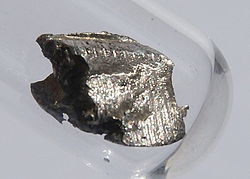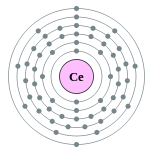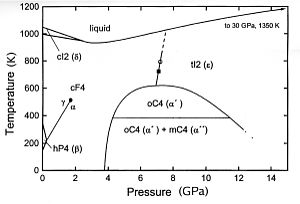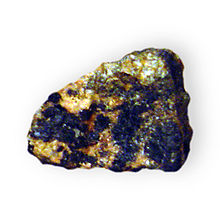
Cerium
Background Information
This Schools selection was originally chosen by SOS Children for schools in the developing world without internet access. It is available as a intranet download. A quick link for child sponsorship is http://www.sponsor-a-child.org.uk/
| Cerium | ||||||||||||||||||||||||||||||||||||||||||||||||||||||||||
|---|---|---|---|---|---|---|---|---|---|---|---|---|---|---|---|---|---|---|---|---|---|---|---|---|---|---|---|---|---|---|---|---|---|---|---|---|---|---|---|---|---|---|---|---|---|---|---|---|---|---|---|---|---|---|---|---|---|---|
|
58Ce
|
||||||||||||||||||||||||||||||||||||||||||||||||||||||||||
|
||||||||||||||||||||||||||||||||||||||||||||||||||||||||||
| Appearance | ||||||||||||||||||||||||||||||||||||||||||||||||||||||||||
silvery white |
||||||||||||||||||||||||||||||||||||||||||||||||||||||||||
| General properties | ||||||||||||||||||||||||||||||||||||||||||||||||||||||||||
| Name, symbol, number | cerium, Ce, 58 | |||||||||||||||||||||||||||||||||||||||||||||||||||||||||
| Pronunciation | / ˈ s ɪər i ə m / | |||||||||||||||||||||||||||||||||||||||||||||||||||||||||
| Metallic category | lanthanide | |||||||||||||||||||||||||||||||||||||||||||||||||||||||||
| Group, period, block | n/a, 6, f | |||||||||||||||||||||||||||||||||||||||||||||||||||||||||
| Standard atomic weight | 140.116 | |||||||||||||||||||||||||||||||||||||||||||||||||||||||||
| Electron configuration | [Xe] 4f1 5d1 6s2 2, 8, 18, 19, 9, 2 |
|||||||||||||||||||||||||||||||||||||||||||||||||||||||||
| History | ||||||||||||||||||||||||||||||||||||||||||||||||||||||||||
| Discovery | Martin Heinrich Klaproth, Jöns Jakob Berzelius, Wilhelm Hisinger (1803) | |||||||||||||||||||||||||||||||||||||||||||||||||||||||||
| First isolation | Carl Gustaf Mosander (1839) | |||||||||||||||||||||||||||||||||||||||||||||||||||||||||
| Physical properties | ||||||||||||||||||||||||||||||||||||||||||||||||||||||||||
| Phase | solid | |||||||||||||||||||||||||||||||||||||||||||||||||||||||||
| Density (near r.t.) | 6.770 g·cm−3 | |||||||||||||||||||||||||||||||||||||||||||||||||||||||||
| Liquid density at m.p. | 6.55 g·cm−3 | |||||||||||||||||||||||||||||||||||||||||||||||||||||||||
| Melting point | 1068 K, 795 °C, 1463 °F | |||||||||||||||||||||||||||||||||||||||||||||||||||||||||
| Boiling point | 3716 K, 3443 °C, 6229 °F | |||||||||||||||||||||||||||||||||||||||||||||||||||||||||
| Heat of fusion | 5.46 kJ·mol−1 | |||||||||||||||||||||||||||||||||||||||||||||||||||||||||
| Heat of vaporization | 398 kJ·mol−1 | |||||||||||||||||||||||||||||||||||||||||||||||||||||||||
| Molar heat capacity | 26.94 J·mol−1·K−1 | |||||||||||||||||||||||||||||||||||||||||||||||||||||||||
| Vapor pressure | ||||||||||||||||||||||||||||||||||||||||||||||||||||||||||
|
||||||||||||||||||||||||||||||||||||||||||||||||||||||||||
| Atomic properties | ||||||||||||||||||||||||||||||||||||||||||||||||||||||||||
| Oxidation states | 4, 3, 2, 1 (mildly basic oxide) |
|||||||||||||||||||||||||||||||||||||||||||||||||||||||||
| Electronegativity | 1.12 (Pauling scale) | |||||||||||||||||||||||||||||||||||||||||||||||||||||||||
| Ionization energies | 1st: 534.4 kJ·mol−1 | |||||||||||||||||||||||||||||||||||||||||||||||||||||||||
| 2nd: 1050 kJ·mol−1 | ||||||||||||||||||||||||||||||||||||||||||||||||||||||||||
| 3rd: 1949 kJ·mol−1 | ||||||||||||||||||||||||||||||||||||||||||||||||||||||||||
| Atomic radius | 181.8 pm | |||||||||||||||||||||||||||||||||||||||||||||||||||||||||
| Covalent radius | 204±9 pm | |||||||||||||||||||||||||||||||||||||||||||||||||||||||||
| Miscellanea | ||||||||||||||||||||||||||||||||||||||||||||||||||||||||||
| Crystal structure | face-centered cubic | |||||||||||||||||||||||||||||||||||||||||||||||||||||||||
| Magnetic ordering | paramagnetic | |||||||||||||||||||||||||||||||||||||||||||||||||||||||||
| Electrical resistivity | ( r.t.) (β, poly) 828 nΩ·m | |||||||||||||||||||||||||||||||||||||||||||||||||||||||||
| Thermal conductivity | 11.3 W·m−1·K−1 | |||||||||||||||||||||||||||||||||||||||||||||||||||||||||
| Thermal expansion | ( r.t.) (γ, poly) 6.3 µm/(m·K) | |||||||||||||||||||||||||||||||||||||||||||||||||||||||||
| Speed of sound (thin rod) | (20 °C) 2100 m·s−1 | |||||||||||||||||||||||||||||||||||||||||||||||||||||||||
| Young's modulus | (γ form) 33.6 GPa | |||||||||||||||||||||||||||||||||||||||||||||||||||||||||
| Shear modulus | (γ form) 13.5 GPa | |||||||||||||||||||||||||||||||||||||||||||||||||||||||||
| Bulk modulus | (γ form) 21.5 GPa | |||||||||||||||||||||||||||||||||||||||||||||||||||||||||
| Poisson ratio | (γ form) 0.24 | |||||||||||||||||||||||||||||||||||||||||||||||||||||||||
| Mohs hardness | 2.5 | |||||||||||||||||||||||||||||||||||||||||||||||||||||||||
| Vickers hardness | 270 MPa | |||||||||||||||||||||||||||||||||||||||||||||||||||||||||
| Brinell hardness | 412 MPa | |||||||||||||||||||||||||||||||||||||||||||||||||||||||||
| CAS registry number | 7440-45-1 | |||||||||||||||||||||||||||||||||||||||||||||||||||||||||
| Most stable isotopes | ||||||||||||||||||||||||||||||||||||||||||||||||||||||||||
| Main article: Isotopes of cerium | ||||||||||||||||||||||||||||||||||||||||||||||||||||||||||
|
||||||||||||||||||||||||||||||||||||||||||||||||||||||||||
Cerium is a chemical element with symbol Ce and atomic number 58. It is a soft, silvery, ductile metal which easily oxidizes in air. Cerium was named after the dwarf planet Ceres (itself named for the Roman goddess of agriculture). Cerium is the most abundant of the rare earth elements, making up about 0.0046% of the Earth's crust by weight. It is found in a number of minerals, the most important being monazite and bastnasite. Commercial applications of cerium are numerous. They include catalysts, additives to fuel to reduce emissions and to glass and enamels to change their colour. Cerium oxide is an important component of glass polishing powders and phosphors used in screens and fluorescent lamps. It is also used in the "flint" (actually ferrocerium) of lighters.
Characteristics
Physical properties
Cerium is a silvery metal, belonging to the lanthanide group. It resembles iron in colour and luster, but is soft, and both malleable and ductile. Cerium has the third-longest liquid range of any element: 2648 C° (795 °C to 3443 °C) or 4766 F° (1463 °F to 6229 °F). (Only neptunium and thorium have longer liquid ranges.)
Cerium has a variable electronic structure. The energy of the inner 4f level is nearly the same as that of the outer or valence electrons, and only small energy is required to change the relative occupancy of these electronic levels. This gives rise to dual valency states. For example, a volume change of about 10% occurs when cerium is subjected to high pressures or low temperatures. It appears that the valence changes from about 3 to 4 when it is cooled or compressed. The low temperature behaviour of cerium is complex. Four allotropic modifications are thought to exist: cerium at room temperature and at atmospheric pressure is known as γ-cerium. Upon cooling to –16 °C, γ-cerium changes to β-cerium. The remaining γ-cerium starts to change to α-cerium when cooled to –172 °C, and the transformation is complete at –269 °C. α-cerium has a density of 8.16; δ-cerium exists above 726 °C. At atmospheric pressure, liquid cerium is more dense than its solid form at the melting point.
Cerium metal is highly pyrophoric, meaning that when it is ground or scratched, the resulting shavings catch fire.
Chemical properties
Cerium metal tarnishes slowly in air and burns readily at 150 °C to form cerium(IV) oxide:
- Ce + O2 → CeO2
Cerium is quite electropositive and reacts slowly with cold water and quite quickly with hot water to form cerium hydroxide:
- 2 Ce (s) + 6 H2O (l) → 2 Ce(OH)3 (aq) + 3 H2 (g)
Cerium metal reacts with all the halogens:
- 2 Ce (s) + 3 F2 (g) → 2 CeF3 (s) [white]
- 2 Ce (s) + 3 Cl2 (g) → 2 CeCl3 (s) [white]
- 2 Ce (s) + 3 Br2 (g) → 2 CeBr3 (s) [white]
- 2 Ce (s) + 3 I2 (g) → 2 CeI3 (s) [yellow]
Cerium dissolves readily in dilute sulfuric acid to form solutions containing the colorless Ce(III) ions, which exist as a [Ce(OH2)9]3+ complexes:
- 2 Ce (s) + 3 H2SO4 (aq) → 2 Ce3+ (aq) + 3 SO2−
4 (aq) + 3 H2 (g)
Compounds
Cerium(IV) (ceric) salts are orange red or yellowish, whereas cerium(III) (cerous) salts are usually white or colorless. Both oxidation states absorb ultraviolet light strongly. Cerium(III) can be used to make glasses that are colorless, yet absorb ultraviolet light almost completely. Cerium can be readily detected in rare earth mixtures by a very sensitive qualitative test: addition of ammonia and hydrogen peroxide to an aqueous solution of lanthanides produces a characteristic dark brown colour if cerium is present.
Cerium exhibits three oxidation states, +2, +3 and +4. The +2 state is rare and is observed in CeH2, CeI2 and CeS. The most common compound of cerium is cerium(IV) oxide (CeO2), which is used as " Jeweller's rouge" as well as in the walls of some self-cleaning ovens. Two common oxidizing agents used in titrations are ammonium cerium(IV) sulfate (ceric ammonium sulfate, (NH4)2Ce(SO4)3) and ammonium cerium(IV) nitrate (ceric ammonium nitrate or CAN, (NH4)2Ce(NO3)6). Cerium also forms a chloride, CeCl3 or cerium(III) chloride, used to facilitate reactions at carbonyl groups in organic chemistry. Other compounds include cerium(III) carbonate (Ce2(CO3)3), cerium(III) fluoride (CeF3), cerium(III) oxide (Ce2O3), as well as cerium(IV) sulfate (ceric sulfate, Ce(SO4)2) and cerium(III) triflate (Ce(OSO2CF3)3).
The two oxidation states of cerium differ enormously in basicity: cerium(III) is a strong base, comparable to the other trivalent lanthanides, but cerium(IV) is weak. This difference has always allowed cerium to be by far the most readily isolated and purified of all the lanthanides, otherwise a notoriously difficult group of elements to separate. A wide range of procedures have been devised over the years to exploit the difference. These include:
- Leaching the mixed hydroxides with dilute nitric acid: the trivalent lanthanides dissolve in cerium-free condition, and tetravalent cerium remains in the insoluble residue as a concentrate to be further purified by other means. A variation on this uses hydrochloric acid and the calcined oxides from bastnasite, but the separation is less sharp.
- Precipitating cerium from a nitrate or chloride solution using potassium permanganate and sodium carbonate in a 1:4 molar ratio.
- Boiling rare-earth nitrate solutions with potassium bromate and marble chips.
Formerly used commercially was a method whereby a solution of cerium(IV) in nitric acid would be added to dilute sulfuric acid. This caused cerium(IV) to largely precipitate as a basic salt, leaving trivalent lanthanide in solution. However, the finely divided precipitate was difficult to filter from the highly corrosive medium. Using the classical methods of rare-earth separation, there was a considerable advantage to a strategy of removing cerium from the mixture at the beginning. Cerium typically comprised 45% of the cerite or monazite rare earths, and removing it early greatly reduced the bulk of what needed to be further processed (or the cost of reagents to be associated with such processing). However, not all cerium purification methods relied on basicity. Ceric ammonium nitrate [ammonium hexanitratocerate(IV)] crystallization from nitric acid was one purification method. Cerium(IV) nitrate (hexanitratoceric acid) was more readily extractable into certain solvents (e.g. tri-n-butyl phosphate) than the trivalent lanthanides. However, modern practice in China seems to be to do purification of cerium by counter-current solvent extraction, in its trivalent form, just like the other lanthanides.
Cerium(IV) is a strong oxidant under acidic conditions, but stable under alkaline conditions, when it is cerium(III) that becomes a strong reductant, easily oxidized by atmospheric oxygen (O2). This ease of oxidation under alkaline conditions leads to the occasional geochemical parting of the ways between cerium and the trivalent light lanthanides under supergene weathering conditions, leading variously to the "negative cerium anomaly" or to the formation of the mineral cerianite. Air-oxidation of alkaline cerium(III) is the most economical way to get to cerium(IV), which can then be handled in acid solution.
Isotopes
There are four isotopes of cerium that occur naturally. These are 140Ce, which makes up 88.5% of cerium on earth; 142Ce, which makes up 11% of cerium on earth; 138Ce, which makes up 0.3% of cerium on earth; and 136Ce, which makes up 0.2% of cerium on Earth. However, only 140Ce is stable. 142Ce, 138Ce, and 136Ce have half-lives of 5×1016 years, 1.5×1015 years, and 70 trillion years respectively. Additionally, some isotopes of cerium occur naturally in trace amounts as the result of fission of uranium.
39 isotopes of cerium have been discovered altogether. They range from 119Ce to 157Ce.
History
Cerium was discovered in Bastnäs in Sweden by Jöns Jakob Berzelius and Wilhelm Hisinger, and independently in Germany by Martin Heinrich Klaproth, both in 1803. Cerium was named by Berzelius after the dwarf planet Ceres, discovered two years earlier (1801). As originally isolated, cerium was in the form of its oxide, and was named ceria, a term that is still used. The metal itself was too electropositive to be isolated by then-current smelting technology, a characteristic of rare earth metals in general. After the development of electrochemistry by Humphry Davy five years later, the earths soon yielded the metals they contained. Ceria, as isolated in 1803, contained all of the lanthanides present in the cerite ore from Bastnäs, Sweden, and thus only contained about 45% of what is now known to be pure ceria. It was not until Carl Gustaf Mosander succeeded in removing lanthana and "didymia" in the late 1830s, that ceria was obtained pure. Wilhelm Hisinger was a wealthy mine owner and amateur scientist, and sponsor of Berzelius. He owned or controlled the mine at Bastnäs, and had been trying for years to find out the composition of the abundant heavy gangue rock (the "Tungsten of Bastnäs"), now known as cerite, that he had in his mine. Mosander and his family lived for many years in the same house as Berzelius, and Mosander was undoubtedly persuaded by Berzelius to investigate ceria further.
When the rare earths were first discovered, since they were strong bases like the oxides of calcium or magnesium, they were thought to be divalent. Thus, "ceric" cerium was thought to be trivalent, and the oxidation state ratio was therefore thought to be 1.5. Berzelius was annoyed to keep on getting the correct ratio 1.33.
In the late 1950s, the Lindsay Chemical Division of American Potash and Chemical Corporation of West Chicago, Illinois, then the largest producer of rare earths in the world, was offering cerium compounds in two purity ranges, "commercial" at 94–97% purity, and "purified", at a reported 99.9+% purity. In their October 1, 1958 price list, one-pound quantities of the oxides were priced at $3.30 or $8.10 respectively for the two purities; the per-pound price for 50-pound quantities were respectively $1.95 or $4.95 for the two grades. Cerium salts were proportionately cheaper, reflecting their lower net content of oxide.
Occurrence
Cerium is the most abundant of the rare earth elements, making up about 0.0046% of the Earth's crust by weight. It is found in a number of minerals including allanite (also known as orthite)—(Ca,Ce,La,Y)2(Al,Fe)3(SiO4)3(OH), monazite (Ce,La,Th,Nd,Y)PO4, bastnasite (Ce,La,Y)CO3F, hydroxylbastnasite (Ce,La,Nd)CO3(OH,F), rhabdophane (Ce,La,Nd)PO4-H2O, zircon (ZrSiO4), and synchysite Ca(Ce,La,Nd,Y)(CO3)2F. Monazite and bastnasite are presently the two most important sources of cerium. Large deposits of monazite, allanite, and bastnasite will supply cerium, thorium, and other rare-earth metals for many years to come.
Cerium content in the soil varies between 2 and 150 parts per million (ppm), with an average of 50 ppm. Seawater contains 1.5 parts per trillion of cerium. There is almost no cerium in the atmosphere.
Production
The mineral mixtures are crushed, ground and treated with hot concentrated sulfuric acid to produce water-soluble sulfates of rare earths. The acidic filtrates are partially neutralized with sodium hydroxide to pH 3–4. Thorium precipitates out of solution as hydroxide and is removed. After that the solution is treated with ammonium oxalate to convert rare earths in to their insoluble oxalates. The oxalates are converted to oxides by annealing. The oxides are dissolved in nitric acid that excludes one of the main components, cerium, whose salts are insoluble in HNO3. Metallic cerium is prepared by metallothermic reduction techniques, such as by reducing cerium fluoride or chloride with calcium, or by electrolysis of molten cerous chloride or other cerous halides. The metallothermic technique is used to produce high-purity cerium.
Applications
A major technological application for cerium(III) oxide is a catalytic converter for the reduction of CO emissions in the exhaust gases from motor vehicles. In particular, cerium oxide is added into diesel fuels. Another important use of the cerium oxide is a hydrocarbon catalyst in self cleaning ovens, incorporated into oven walls and as a petroleum cracking catalyst in petroleum refining.
Cerium(IV) oxide is considered one of the most efficient agents for precision polishing of optical components. Cerium compounds are also used in the manufacture of glass, both as a component and as a decolorizer. For example, cerium(IV) oxide in combination with titanium(IV) oxide gives a golden yellow colour to glass; it also allows for selective absorption of ultraviolet light in glass. Cerium oxide has a high refractive index and is added to enamel to make it more opaque.
Cerium(IV) oxide is used in incandescent gas mantles, such as the Welsbach mantle, where it was combined with thorium, lanthanum, magnesium or yttrium oxides. Doped with other rare earth oxides, it has been investigated as a solid electrolyte in intermediate temperature solid oxide fuel cells: The cerium(IV) oxide-cerium(III) oxide cycle or CeO2/Ce2O3 cycle is a two step thermochemical process based on cerium(IV) oxide and cerium(III) oxide for hydrogen production.
The photostability of pigments can be enhanced by addition of cerium. It provides pigments with light fastness and prevents clear polymers from darkening in sunlight. Television glass plates are subject to electron bombardment, which tends to darken them by creation of F-center colour centers. This effect is suppressed by addition of cerium oxide. Cerium is also an essential component of phosphors used in TV screens and fluorescent lamps. Cerium sulfide forms a red pigment that stays stable of to 350 °C. The pigment is a nontoxic alternative to cadmium sulfide pigments.
A traditional use of cerium was in the pyrophoric mischmetal alloy used for light flints. Because of the high affinity of cerium to sulfur and oxygen, it is used in various aluminium alloys, and iron alloys. In steels, cerium degasifies and can help reduce sulfides and oxides, and it is a precipitation hardening agent in stainless steel. Adding cerium to cast irons opposes graphitization and produces a malleable iron. Addition of 3–4% of cerium to magnesium alloys, along with 0.2 to 0.6% zirconium, helps refine the grain and give sound casting of complex shapes. It also adds heat resistance to magnesium castings. Cerium metal is sometimes added to aluminium to improve aluminium's corrosion resistance.
Cerium alloys are used in permanent magnets and in tungsten electrodes for gas tungsten arc welding. Cerium is used in carbon-arc lighting, especially in the motion picture industry. Cerium oxalate is an anti-emetic drug. Cerium(IV) sulfate is used extensively as a volumetric oxidizing agent in quantitative analysis. Ceric ammonium nitrate is a useful one-electron oxidant in organic chemistry, used to oxidatively etch electronic components, and as a primary standard for quantitative analysis.
Biological role
Cerium can act similar to calcium in organisms, so accumulates in bones in small amounts. Cerium is also found in small amounts in tobacco plants, barley, and the wood of beech trees. However, very little cerium accumulates in the food chain. Human blood contains 0.001 ppm, human bones contain 3 ppm, and human tissue contains 0.3 ppm of cerium. There is a total of 40 milligrams of cerium in a typical 70-kilogram human. Humans typically consume less than a milligram per day of cerium. Cerium serves no known biological function, but cerium salts can stimulate metabolism.
Precautions
Cerium, like all rare-earth metals, is of low to moderate toxicity. Cerium is a strong reducing agent and ignites spontaneously in air at 65 to 80 °C. Fumes from cerium fires are toxic. Water should not be used to stop cerium fires, as cerium reacts with water to produce hydrogen gas. Workers exposed to cerium have experienced itching, sensitivity to heat, and skin lesions. Cerium is not toxic when consumed orally, but animals injected with large doses of cerium have died due to cardiovascular collapse. Cerium is more dangerous to aquatic organisms, on account of being damaging to cell membranes. Cerium(IV) oxide is a powerful oxidizing agent at high temperatures and will react with combustible organic materials. While cerium is not radioactive, the impure commercial grade may contain traces of thorium, which is weakly radioactive.





